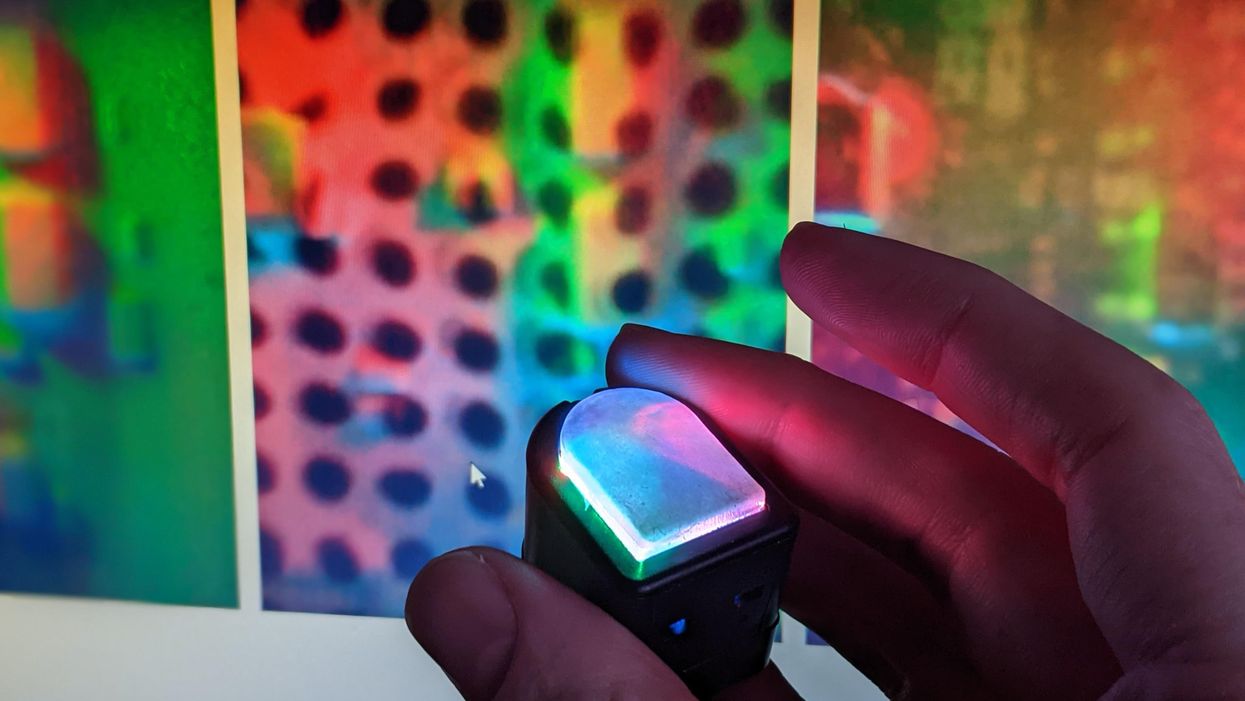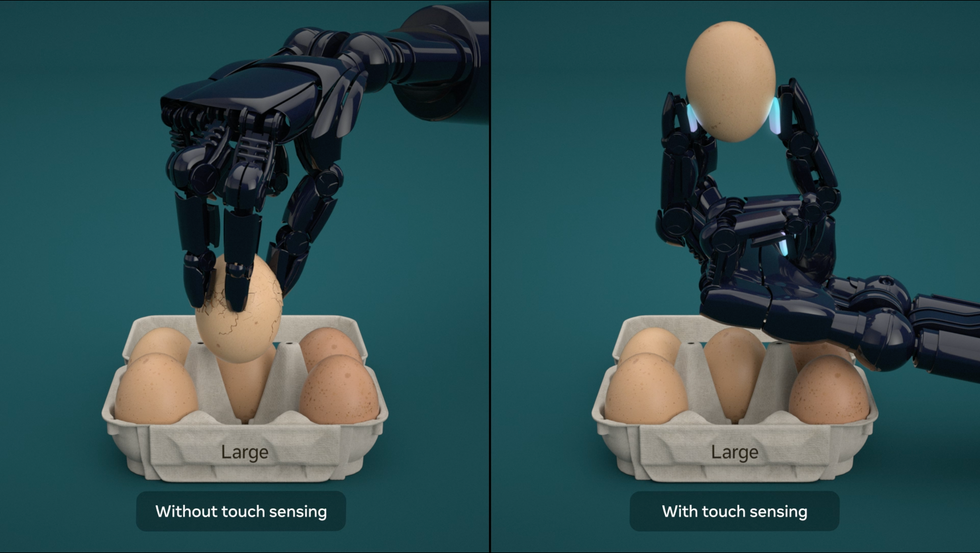
#439908 Why Facebook (Or Meta) Is Making Tactile ...
Facebook, or Meta as it's now calling itself for some reason that I don't entirely understand, is today announcing some new tactile sensing hardware for robots. Or, new-ish, at least—there's a ruggedized and ultra low-cost GelSight-style fingertip sensor, plus a nifty new kind of tactile sensing skin based on suspended magnetic particles and machine learning. It's cool stuff, but why? Obviously,
Well, okay, but none of that seems like a good justification for research into tactile sensing specifically. But according to LeCun, it's all about putting together the pieces required for some level of fundamental world understanding, a problem that robotic systems are still bad at and that machine learning has so far not been able to tackle:
AI systems (robots included) are very very dumb in very very specific ways, quite often the ways in which humans are least understanding and forgiving of. This is such a well established thing that there's a name for it: Moravec's paradox. Humans are great at subconscious levels of world understanding that we've built up over years and years of experience being, you know, alive. AI systems have none of this, and there isn't necessarily a clear path to getting them there, but one potential approach is to start with the fundamentals in the same way that a shiny new human does and build from there, a process that must necessarily include touch.
The DIGIT touch sensor is based on the GelSight style of sensor, which was first conceptualized at MIT over a decade ago. The basic concept of these kinds of tactile sensors is that they're able to essentially convert a touch problem into a vision problem: an array of LEDs illuminate a squishy finger pad from the back, and when the squishy finger pad pushes against something with texture, that texture squishes through to the other side of the finger pad where it's illuminated from many different angles by the LEDs. A camera up inside of the finger takes video of this, resulting in a very rainbow but very detailed picture of whatever the finger pad is squishing against.
The DIGIT paper published last year summarizes the differences between this new sensor and previous versions of GelSight: DIGIT improves over existing GelSight sensors in several ways: by providing a more compact form factor that can be used on multi-finger hands, improving the durability of the elastomer gel, and making design changes that facilitate large-scale, repeatable production of the sensor hardware to facilitate tactile sensing research. DIGIT is open source, so you can make one on your own, but that's a hassle. The really big news here is that GelSight itself (an MIT spinoff which commercialized the original technology) will be commercially manufacturing DIGIT sensors, providing a standardized and low-cost option for tactile sensing. The bill of materials for each DIGIT sensor is about US $15 if you were to make a thousand of them, so we're expecting that the commercial version won't cost much more than that.
The other hardware announcement is ReSkin, a tactile sensing skin developed in collaboration with Carnegie Mellon. Like DIGIT, the idea is to make an open source, robust, and very low cost system that will allow researchers to focus on developing the software to help robots make sense of touch rather than having to waste time on their own hardware. ReSkin operates on a fairly simple concept: it's a flexible sheet of 2mm thick silicone with magnetic particles carelessly mixed in. The sheet sits on top of a magnetometer, and whenever the sheet deforms (like if something touches it), the magnetic particles embedded in the sheet get squooshed and the magnetic signal changes, which is picked up by the magnetometer. For this to work, the sheet doesn't have to be directly connected to said magnetometer. This is key, because it makes the part of the ReSkin sensor that's most likely to get damaged super easy to replace—just peel it off and slap on another one and you're good to go.
I get that touch is an integral part of this humanish world understanding that
Calandra also noted that they still have plenty of work to do to get DIGIT closer in form factor and capability to a human finger, which is an aspiration that I often hear from roboticists. But I always wonder: why bother? Like, why constrain robots (which can do all kinds of things that humans cannot) to do things in a human-like way, when we can instead leverage creative sensing and actuation to potentially give them superhuman capabilities? Here's what Calandra thinks:
So there you have it—the future of manipulation is 100% sometimes probably tentacles. |



